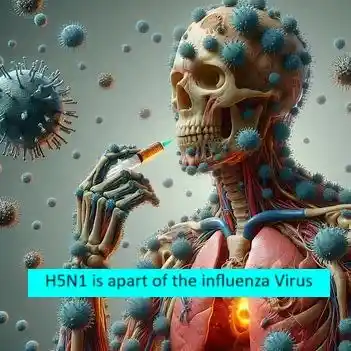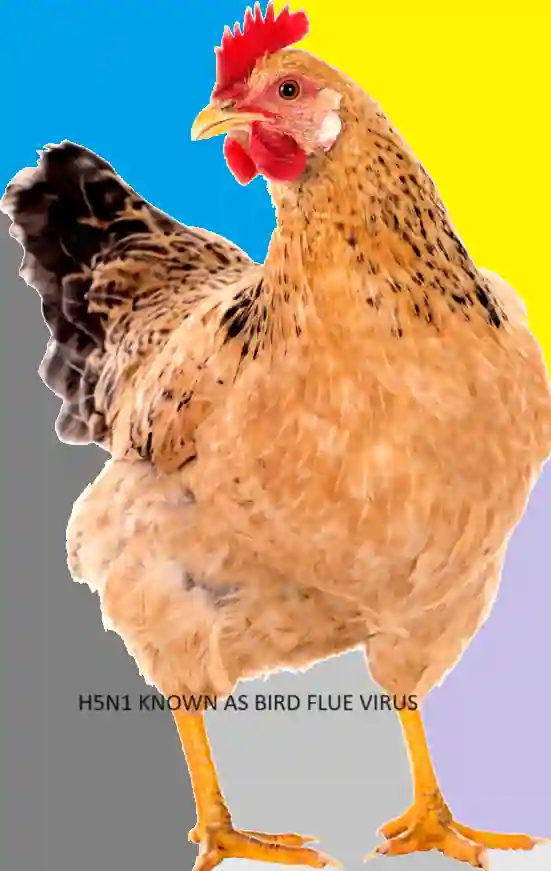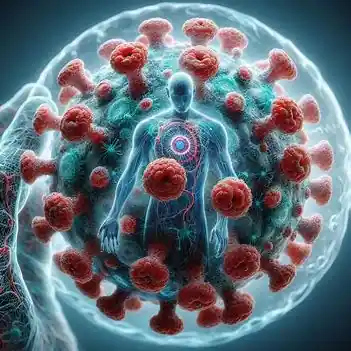H5N1 virus in the category of infectious diseases, the H5N1 virus has attracted special attention and concern due to its severity. Also known as avian influenza or bird flu, H5N1 virus has raised concerns about a potential pandemic and presents significant challenges to public health authorities around the world. In this detailed article, we will analyze the complexities of the H5N1 virus, exploring its origins, modes of transmission, symptoms, treatment options, and ongoing efforts to mitigate its impact. The Largest H5N1 virus Outbreak in U.S. History.
The world is facing the threat of a new pandemic, which could be 100 times more dangerous than Corona.

H5N1 viruses
which is part of the influenza A virus family, include varieties that can infect birds and mammals, including humans. While the virus spreads primarily among wild birds, it occasionally crosses species boundaries to infect domestic poultry, causing serious outbreaks in both animals and humans.
The first known cases of H5N1 virus in humans occurred in Hong Kong in 1997, where it caused severe respiratory illnesses and death. Subsequent outbreaks demonstrated its global spread and persistence in poultry farms and markets in Asia, Europe, and Africa.
Transmission dynamics
The major transmission route of H5N1 virus is direct contact with infected birds or their contaminated environment. Close contact with poultry such as chickens, ducks, and swans increase the risk of exposure to the virus, especially in locations where biosecurity measures are inadequate.
Rarely, H5N1 can be transmitted from one person to another, but such cases are usually limited to close contact with infected individuals and do not lead to sustained human-to-human transmission. Nevertheless, the possibility of genetic changes to the virus that could increase its transmission between humans remains a serious concern for public health administrators.

Clinical Manifestations
Clinical symptoms of H5N1 infection in humans can vary greatly, ranging from mild respiratory symptoms to severe pneumonia and multi-organ failure. Fever, cough, sore throat and muscle aches are common early symptoms of the disease, which can rapidly progress to respiratory distress and respiratory failure in severe cases.
Complications associated with H5N1 infection may include acute respiratory distress syndrome (ARDS), bacterial pneumonia, and neurological problems such as encephalitis or seizures. The mortality rate from H5N1 infection is very high, with estimates ranging from 30% to 60% of reported cases.

Diagnosis and treatment of H5N1 Virus
Diagnosing H5N1 virus infection requires laboratory testing of a respiratory sample, blood sample, or throat swab to identify the virus. Rapid antigen tests and molecular tests, such as polymerase chain reaction (PCR), are commonly performed to confirm the diagnosis and manage the patient.
Treatment options for H5N1 infection are limited and focus primarily on controlling symptoms and preventing complications. Antiviral medications, taken under the guidance of qualified doctors, can reduce the severity and duration of infection, especially when given in the early stages of infection.
Preventing H5N1 virus infection requires a multipronged approach that includes both public health interventions and personal protective measures. Key strategies to control the spread of the virus include:
- Surveillance and monitoring: Early detection of H5N1 virus outbreaks in birds and humans is essential to implement timely control measures and prevent further transmission.
- Biosecurity measures: Implementing strict biosecurity protocols in poultry farms and markets can reduce the risk of bird flu Virous transmission between birds and reduce the possibility of spread to humans.
- Vaccination: Vaccination of domestic poultry against bird flu Virous may help prevent outbreaks and reduce the spread of the virus within bird populations, thereby reducing the risk of human exposure.
- Public awareness and education: Educating the public about the risks of avian influenza and promoting hygiene practices, such as hand washing and proper food handling, can help reduce the chance of human infection.
- Global collaboration: Collaboration among countries and international organizations is essential to coordinate surveillance efforts, share information and resources, and respond effectively to bird flu Virous outbreaks globally.

Frequently Asked Questions (FAQs)
- What isH5N 1 Virus?
- The bird flu Virous, also known as avian influenza or bird flu, is a subtype of influenza A virus that primarily infects birds but can sometimes jump species barriers and infect humans. This has led to outbreaks of sporadic cases of human infection with severe respiratory illness and high mortality in poultry.
- How H5N1 virus is Spread?
- The primary mode of transmission of bird flu Virous is direct contact with infected birds or their contaminated environment. In rare cases, human-to-human transmission may occur, usually between close contacts of infected individuals. However, sustained human-to-human transmission is rare.
- What are the symptoms ofH5N 1 infection?
- Symptoms of H5N1 virus infection in humans can vary but often include fever, cough, sore throat, muscle aches, and respiratory distress. Severe cases can progress rapidly to pneumonia, respiratory failure and multi-organ dysfunction with a high risk of mortality.
- Is there a vaccine forH5N 1?
- Several experimental vaccines for bird flu Virous have been developed, but none are currently approved for widespread use in humans. Research into novel vaccine platforms and universal influenza vaccines is ongoing to improve protection against various strains of influenza, including bird flu Virous.
- How is H5N1infection diagnosed?
- Diagnosis of bird flu Virous infection requires laboratory testing of respiratory samples, blood samples, or throat swabs to detect the presence of the virus. Rapid antigen tests and molecular assays, such as polymerase chain reaction (PCR),, are commonly used for diagnosis.
- What are the Treatment Options for H5N1 virus Infection?
- Treatment of H5N1 virus infection mainly involves supportive care to reduce symptoms and prevent complications. Antiviral medicines, such as oseltamivir (Tamiflu) or zanamivir (Relenza), may be prescribed to reduce the severity and duration of the disease, especially when administered early during infection.
- How can H5N1 virus infection be prevented?
- Preventing bird flu Virous infection requires a multipronged approach that includes strict biosecurity measures in poultry farms and markets, vaccination of domestic poultry, public awareness and education about the risks of avian influenza, and global cooperation for surveillance and control efforts.
- What is a Health Approach to H5N1 virus Control?
- The One Health approach recognizes the interconnectedness of human, animal and environmental health and emphasizes collaboration between various stakeholders to address zoonotic diseases such as H5N1. This includes enhancing surveillance systems, improving communication between relevant areas, and implementing evidence-based interventions to reduce the risk of transmission.
Conclusion future perspective
Even though significant progress has been made in understanding the H5N1 virus and efforts to control its spread continue, the threat of a potential bird flu Virous pandemic remains. Continued awareness, investment in research, and international collaboration are essential to reduce the impact of H5N1 and other emerging infectious diseases.
This bird flu Virous presents a serious challenge to global health security, with the potential to cause widespread disease and high mortality if uncontrolled. With a deeper understanding of the origin, transmission dynamics, clinical symptoms, and preventive measures of (more about H5N1, click this) we can better prepare for and respond to future outbreaks of this deadly virus.
Please review the information regarding the H5N1 virus and the state of emergency in California, The H5N1 avian influenza virus in USA.